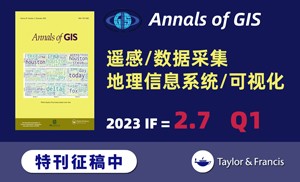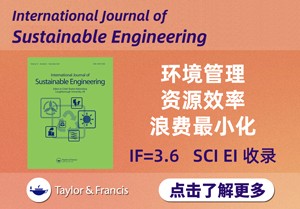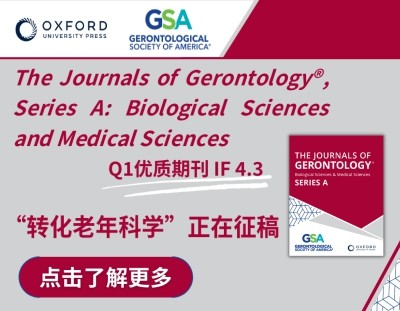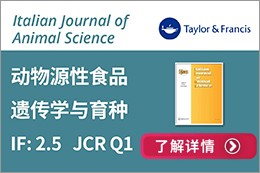样式: 排序: IF: - GO 导出 标记为已读
-
Osteology and relationships of the Late Triassic giant dicynodont Lisowicia Zool. J. Linn. Soc. (IF 3.0) Pub Date : 2024-09-15 Tomasz Sulej
Unexpectedly abundant remains of herbivorous therapsids in the Late Triassic strata of southern Poland have significantly supplemented knowledge of their evolution. The skeletal morphology of the Late Norian (or Rhaetian) dicynodont Lisowicia bojani supports its close relationship to the Carnian Woznikella, both known from the Polish part of the Germanic Basin. Three evolutionary lineages of dicyn
-
Morphological diversification with emphasis on the structural and homology patterns of male genitalia in genus Limnebius (Leach 1815; Hydraenidae: Coleoptera) Zool. J. Linn. Soc. (IF 3.0) Pub Date : 2024-09-08 Andrey Rudoy, Ling-Zeng Meng
Limnebius exhibits uniform external appearance but variable male genitalia: from differently curved rod shapes in the subgenus Bilimneus to up to seven longitudinally separated folds or appendages in Limnebius s.s.. Among nonsexual traits, two subgenera diverge only in the wing. The aedeagal complexity in Limnebius s.s. is associated with the secondary sexual structures on the abdomen and metatibia;
-
A new dentition-based phylogeny of Litopterna (Mammalia: Placentalia) and ‘archaic’ South American ungulates Zool. J. Linn. Soc. (IF 3.0) Pub Date : 2024-09-07 Hans P Püschel, Sarah L Shelley, Thomas E Williamson, Fernando A Perini, John R Wible, Stephen L Brusatte
Ever since the discovery of Macrauchenia patachonica by Charles Darwin in 1834, the affinities of litopterns—a group of extinct South American Native Ungulates (SANUs)—have been elusive. In particular, the interfamilial relationships and timing of the familial diversification within the order Litopterna have not been addressed with adequate taxon and character sampling, and modern phylogenetic methods
-
Phylogenomics of Characidae, a hyper-diverse Neotropical freshwater fish lineage, with a phylogenetic classification including four families (Teleostei: Characiformes) Zool. J. Linn. Soc. (IF 3.0) Pub Date : 2024-09-03 Bruno F Melo, Rafaela P Ota, Ricardo C Benine, Fernando R Carvalho, Flavio C T Lima, George M T Mattox, Camila S Souza, Tiago C Faria, Lais Reia, Fabio F Roxo, Martha Valdez-Moreno, Thomas J Near, Claudio Oliveira
Neotropical tetras of the family Characidae form the largest and most taxonomically complex clade within the order Characiformes. Previous phylogenetic relationships concur on the recognition of four major subclades, whereas knowledge on intergeneric and interspecific relationships remains largely incomplete or nonexistent. We sampled 575 specimens of 494 species and 123 genera classified in Characidae
-
The phylogeny and diversification of the western Eurasian Phaedusinae (Gastropoda: Stylommatophora: Clausiliidae) Zool. J. Linn. Soc. (IF 3.0) Pub Date : 2024-09-02 Nóra M Magonyi, Zoltán Fehér, Miklós Szekeres, Barna Páll-Gergely
The little-known western Eurasian taxa of the Phaedusinae (land snail family Clausiliidae) are Tertiary relicts, which are widely separated geographically from the rest of the subfamily occurring in eastern Eurasia. In order to elucidate the phylogenetic relationships of this group, we carried out molecular analyses with 11 of the 16 genera using nuclear gene sequences. Our results revealed that within
-
Discordance between mitochondrial, nuclear, and symbiont genomes in aphid phylogenetics: who is telling the truth? Zool. J. Linn. Soc. (IF 3.0) Pub Date : 2024-08-26 Emmanuelle Jousselin, Armelle Coeur d’acier, Anne-Laure Clamens, Maxime Galan, Corinne Cruaud, Valérie Barbe, Alejandro Manzano-Marín
Aphids (Aphididae) are intensively studied due to their significance as pests and their captivating biological traits. Despite this interest, the evolutionary history of this insect family is poorly understood. Recent phylogenomic analyses have produced conflicting topologies, complicating our understanding of aphid trait evolution. In this work, we aimed to unravel the backbone phylogeny of aphids
-
Biogeography and phylogeny of the scavenging amphipod genus Valettietta (Amphipoda: Alicelloidea), with descriptions of two new species from the abyssal Pacific Ocean Zool. J. Linn. Soc. (IF 3.0) Pub Date : 2024-08-19 Eva C D Stewart, Guadalupe Bribiesca-Contreras, Johanna N J Weston, Adrian G Glover, Tammy Horton
Valettietta Lincoln & Thurston, 1983 (Amphipoda: Alicelloidea) is an infrequently sampled genus of scavenging amphipod, with a known bathymetric range from 17–5467 m encompassing a variety of habitats from anchialine caves to abyssal plains. Molecular systematics studies have uncovered cryptic speciation in specimens collected from the abyssal Pacific, highlighting uncertainty in the description of
-
How not to describe a species: lessons from a tangle of anacondas (Boidae: Eunectes Wagler, 1830) Zool. J. Linn. Soc. (IF 3.0) Pub Date : 2024-08-19 Wolfgang Wüster, Hinrich Kaiser, Marinus S Hoogmoed, Luis M P Ceríaco, Lutz Dirksen, Christophe Dufresnes, Frank Glaw, Axel Hille, Jörn Köhler, Thore Koppetsch, Konstantin D Milto, Glenn M Shea, David Tarkhnishvili, Scott A Thomson, Miguel Vences, Wolfgang Böhme
A recent revision of the anacondas (Serpentes: Boidae: Eunectes), with the description of a new species of green anaconda, generated extensive publicity, but also provoked considerable controversy due to inadequacies of the evidence used and errors in nomenclature. We here use the case of this problematic publication to: (i) highlight common issues affecting species delimitations, especially an over-reliance
-
The systematics and nomenclature of the Dodo and the Solitaire (Aves: Columbidae), and an overview of columbid family-group nomina Zool. J. Linn. Soc. (IF 3.0) Pub Date : 2024-08-16 Mark T Young, Julian P Hume, Michael O Day, Robert P Douglas, Zoë M Simmons, Judith White, Markus O Heller, Neil J Gostling
The Dodo and its extinct sister species, the Solitaire, are iconic exemplars of the destructive capabilities of humanity. These secondarily terrestrial columbids became extinct within a century of their first encounter with humanity. Their rapid extinction, with little material retained in natural history collections, led 18th and some early 19th century naturalists to believe that these aberrant birds
-
Cranial anatomy of the Triassic rhynchosaur Mesosuchus browni based on computed tomography, with a discussion of the vomeronasal system and its deep history in Reptilia Zool. J. Linn. Soc. (IF 3.0) Pub Date : 2024-08-10 William Foster, Paul Gensbigler, Jacob D Wilson, Roger M H Smith, Tyler R Lyson, Gabriel S Bever
The stem lineage of Archosauria is populated by a diverse fossil record that remains notably understudied relative to the crown clade. Prominent among these specimens is a beautifully preserved skull of the early mid-Triassic rhynchosaur Mesosuchus browni [Iziko South African Museum (SAM) 6536], whose phylogenetic position has considerable influence on patterns of pan-archosaurian cranial evolution
-
Phylogenomics of Phengodidae (Coleoptera: Elateroidea): towards a natural classification of a bioluminescent and paedomorphic beetle lineage, with recognition of a new subfamily Zool. J. Linn. Soc. (IF 3.0) Pub Date : 2024-08-10 Vinicius S Ferreira, André S Roza, Felipe F Barbosa, Viridiana Vega-Badillo, Santiago Zaragoza-Caballero, José Ricardo M Mermudes, Michael A Ivie, Aslak K Hansen, Adam J Brunke, Hume B Douglas, Alexey Solodovnikov, Robin Kundrata
Phengodidae (Coleoptera: Elateroidea), commonly known as glowworm beetles, are a small family of bioluminescent and paedomorphic beetles. There are few phylogenetic studies of Phengodidae, and these are mostly discordant, especially when comparing morphology-based and molecular-based phylogenetic hypotheses. Here, we used the anchored hybrid enrichment approach to undertake the first phylogenomic analysis
-
Timing of intercontinental faunal migrations: Anguimorph lizards from the earliest Eocene (MP 7) of Dormaal, Belgium Zool. J. Linn. Soc. (IF 3.0) Pub Date : 2024-08-09 Andrej Čerňanský, Richard Smith, Thierry Smith, Annelise Folie
Here we report on anguimorph lizards from the earliest Eocene (MP 7) of the Dormaal locality in Belgium, from the time of the warmest global climate of the past 66 million years. Several clades can be identified in this site: Glyptosauridae, Varanidae, and Palaeovaranidae. Our study focuses on glyptosaurid specimens previously reported from the site, some of which had been provisionally described as
-
Breaking through the eggshell: embryonic development of the premaxillary dentition in Lacerta agilis (Squamata: Unidentata) with special emphasis on the egg tooth Zool. J. Linn. Soc. (IF 3.0) Pub Date : 2024-08-09 Paweł Kaczmarek, Brian Metscher, Magdalena Kowalska, Weronika Rupik
The egg tooth of squamates is a true tooth that allows them to break, tear, or cut the eggshell during hatching. In this clade there are some uncertainties concerning the egg tooth implantation geometry, the number of germs, and their fates during embryonic development. Here, we used X-ray microtomography and light microscopy, focusing on the egg tooth and remaining premaxillary teeth of the sand lizard
-
Molecular phylogeny of Trictenotomidae (Coleoptera: Tenebrionoidea): insights into species validation and biogeography of genus Autocrates Zool. J. Linn. Soc. (IF 3.0) Pub Date : 2024-08-08 Seunghyun Lee, Alain Drumont, Dmitry Telnov, Seunghwan Lee, Ming Bai
Trictenotomidae, one of the most charismatic and enigmatic groups of beetles, known for their large size and distinctive mandibles, is widely distributed throughout tropical and subtropical Asia. New species are continually being discovered, and the known range of the group has been expanded considerably by the discovery of Autocrates maqueti Drumont in the Korean Peninsula, ~2,000 km from its previously
-
New insights into the evolution and biogeography of freshwater planarians on islands in the Tyrrhenian Sea, Western Mediterranean Basin, with the integrative description of a new endemic species from Corsica (Platyhelminthes: Tricladida: Dugesia) Zool. J. Linn. Soc. (IF 3.0) Pub Date : 2024-08-08 Daniel Dols-Serrate, Giacinta Angela Stocchino, Paula Nuin-Villabona, Ronald Sluys, Marta Riutort
A recent study on the freshwater planarian fauna of Corsica and Sardinia established that the formerly presumed single species Dugesia benazzii subsumed a complex of species. In that study, a thorough integrative taxonomic approach, combining molecular, morphological, and karyological data, uncovered the presence of two new endemic species. For the present study, additional samplings were conducted
-
The radiation of Austral teals (Aves: Anseriformes) and the evolution of flightlessness Zool. J. Linn. Soc. (IF 3.0) Pub Date : 2024-08-08 Hanna S Rosinger, Olga Kardailsky, Martyn Kennedy, Hamish G Spencer, Florian M Steiner, Birgit C Schlick-Steiner, Nicolas J Rawlence, Michael Knapp
The origin and evolution in the Southern Hemisphere of the Austral teals, consisting of the grey-teal and brown-teal species complexes, remains poorly understood owing to limited molecular data. With the group containing multiple independent examples of flight loss, understanding the evolutionary history of the group is of significant interest for functional genomic studies into the evolution of flightlessness
-
Taxonomy and trans-Beringian biogeography of the pond snails (Gastropoda: Lymnaeidae) of East Asia: an integrative view Zool. J. Linn. Soc. (IF 3.0) Pub Date : 2024-08-03 Olga V Aksenova, Maxim V Vinarski, Tadashi Itagaki, Yuma Ohari, Tatsuo Oshida, Sang Ki Kim, Jin Hee Lee, Alexander V Kondakov, Irina S Khrebtova, Alena A Soboleva, Oksana V Travina, Svetlana E Sokolova, Dmitry M Palatov, Yulia V Bespalaya, Ilya V Vikhrev, Mikhail Yu Gofarov, Ivan N Bolotov
In this work, we present an integrative revision of the Lymnaeidae from the northeastern margin of Asia (Far East Russia, Japan, and Korea) and Alaska. According to our results, 14 native species inhabit this region, belonging to eight genera in two subfamilies (Lymnaeinae: Dallirhytis, Galba, Walhiana, Ladislavella, and Lymnaea; and Amphipepleinae: Kamtschaticana, Orientogalba, and Radix). Four of
-
Molecular phylogeny of Chinese raspy crickets (Orthoptera: Gryllacrididae) reveals incongruences in current classification Zool. J. Linn. Soc. (IF 3.0) Pub Date : 2024-08-01 Shi-Yu Li, Yi-Jiao Liu, Jing-Yi Xu, Zi-Xu Yin, Zhu-Qing He
The current classification system of the family Gryllacrididae primarily relies on morphological characteristics, with limited molecular studies conducted. In this study, we sequenced five genes (COI, COII, Cytb, 18S, and 28S) from a total of 46 gryllacridid individuals mainly from China. Subsequently, we utilized both the maximum likelihood method and the Bayesian inference method to construct a phylogenetic
-
Evolution of fossoriality in microteiid lizards Zool. J. Linn. Soc. (IF 3.0) Pub Date : 2024-07-25 Bruno Halluan S Oliveira, Guarino R Colli, Laurie J Vitt, Daniel O Mesquita
Morphology is among the most important traits influencing the interaction of individual animals with their environments. Fossoriality reflects this functional association between morphology and the use of subterranean habitats and their associated environmental characteristics. Lizards in the families Gymnophthalmidae and Alopoglossidae are model organisms to examine the interplay between morphology
-
Four-toed sengi (Petrodromus tetradactylus, Afrotheria, Mammalia) museomics reveals a crucial role of East African forests in macroscelidean diversification Zool. J. Linn. Soc. (IF 3.0) Pub Date : 2024-07-17 Justus Hagemann, Luis Victoria Nogales, Michael Hofreiter, Patrick Arnold
Sengis (Macroscelidea) are members of the Afroinsectivora, a group of mammals belonging to the supercohort Afrotheria. Sengis’ low population densities and their distribution, which includes politically unstable regions with ongoing armed conflicts, hinder contemporary sampling of comprehensive datasets. We overcome this obstacle for the species Petrodromus tetradactylus, one of the most widely distributed
-
The taxonomic status of Artemia monica Verrill, 1869 (Crustacea: Anostraca) Zool. J. Linn. Soc. (IF 3.0) Pub Date : 2024-07-16 Alireza Asem, Gonzalo Gajardo, D Christopher Rogers, Patrick Sorgeloos
Species are fundamental units of nature that need proper identification in order to assess and conserve biodiversity. Artemia is a model crustacean for population analysis and comparison in regionally endemic sexual species and parthenogenetic lineages distributed in hypersaline lakes, lagoons, and solar saltworks scattered in arid and semi-arid areas worldwide. The taxonomy of two American Artemia
-
The axial biomechanics of Trigonosaurus pricei (Neosauropoda: Titanosauria) and the importance of the cervical–dorsal region to sauropod high-browser feeding strategy Zool. J. Linn. Soc. (IF 3.0) Pub Date : 2024-07-16 Luciano S Vidal, Lílian P Bergqvist, Carlos R A Candeiro, Kamila L N Bandeira, Sandra Tavares, Stephen L Brusatte, Paulo V L G C Pereira
Trigonosaurus pricei is a small to medium-sized sauropod dinosaur (Sauropoda: Titanosauria) from the Late Cretaceous Bauru Group of Brazil that is known from a significant amount of recovered axial elements [four cervical vertebrae, 10 dorsal vertebrae, sacrum (MCT 1488-R), and 10 caudal vertebrae (MCT 1719-R)]. In this biomechanical work, we approach the hypothesis of the cartilaginous neutral pose
-
Thalattosuchian crocodylomorphs from the Sinemurian (Early Jurassic) of the UK Zool. J. Linn. Soc. (IF 3.0) Pub Date : 2024-07-13 Mark T Young, David Dufeau, Charlotte Bowman, Thomas Cowgill, Julia A Schwab, Lawrence M Witmer, Yanina Herrera, Orestis L Katsamenis, Lorna Steel, Martin Rigby, Stephen L Brusatte
Thalattosuchian crocodylomorphs were a ubiquitous component of shallow marine ecosystems during the Jurassic and Early Cretaceous. Alas, their origins remain a mystery. Here we describe three specimens from the Sinemurian (and possibly Early Pliensbachian) of the UK: a partial cranial rostrum, a series of cervical vertebrae, and two dorsal vertebrae adhered with matrix. These specimens are amongst
-
High endemic freshwater mussel (Bivalvia: Unionida) diversity in western Borneo, with description of three new species Zool. J. Linn. Soc. (IF 3.0) Pub Date : 2024-07-02 Alexandra Zieritz, John Pfeiffer, Khairul Adha A Rahim, Hari Prayogo, Muhammad Sofwan Anwari, Farah Diba, Elsa Froufe, Tabitha Blackwell, Hanna Hartikainen, Manuel Lopes-Lima
The freshwater mussels (Bivalvia: Unionida) of the biodiversity hotspot Sundaland are experiencing severe anthropogenic threats, whilst their diversity and distribution remain poorly understood. Here, we present the first modern-day data on Unionida diversity and distribution across western Borneo. Mussels were surveyed and collected in the upper Kapuas and Pawan river basins in West Kalimantan, Indonesia
-
Comparative genomics reveals the evolutionary history of the unicellular eukaryote class Litostomatea and its adaptive evolution based on biochemical metabolic capacity Zool. J. Linn. Soc. (IF 3.0) Pub Date : 2024-07-01 Ying Zhang, Yu Fu, Peter Vďačný, Fasheng Liang, Huan Dou, Alan Warren, Lifang Li
Ciliated protists are unicellular eukaryotic organisms characterized by their morphological diversity, ubiquitous distribution, and the important roles they play in a wide range of biological studies. The class Litostomatea is a morphologically diverse ciliate group that comprises hundreds of free-living and endosymbiotic species. Here, we sequenced 14 predatory litostomateans, i.e. 12 haptorians and
-
Diversification over deep and shallow temporal scales in the Holarctic genus Perpolita (Gastropoda: Gastrodontidae) Zool. J. Linn. Soc. (IF 3.0) Pub Date : 2024-07-01 Takumi Saito, Jeffrey C Nekola, Markéta Nováková, Eva Líznarová, Takahiro Hirano, Veronika Horsáková, Michal Horsák
The Holarctic land snail genus Perpolita was used to explore the influence of past and current biogeography on diversification. The number of empirically-supported species was determined using a consensus between mtDNA sequence, nDNA sequence, conchology, and geographic and ecological range with five valid temperate-boreal species (Perpolita binneyana, Perpolita electrina, Perpolita hammonis, Perpolita
-
A new Antarctic species of Orchomenella G.O. Sars, 1890 (Amphipoda: Lysianassoidea: Tryphosidae): is phase-contrast micro-tomography a mature technique for digital holotypes? Zool. J. Linn. Soc. (IF 3.0) Pub Date : 2024-07-01 Piero G Giulianini, Claude De Broyer, Ed A Hendrycks, Samuele Greco, Elisa D’Agostino, Sandro Donato, Anita Giglio, Marco Gerdol, Alberto Pallavicini, Chiara Manfrin
The purpose of this paper is to describe a new species of Antarctic amphipod of the genus Orchomenella Sars, 1890, Orchomenella rinamontiae sp. nov., and to investigate whether high-resolution images of the surface anatomy obtained ‘in situ’ with synchrotron radiation X-ray phase-contrast micro-tomography (SR-PhC micro-CT) can replace classical approaches to describe a new species. The phylogenetic
-
A new specimen of Dacentrurus armatus Owen, 1875 (Ornithischia: Thyreophora) from the Upper Jurassic of Spain and its taxonomic relevance in the European stegosaurian diversity Zool. J. Linn. Soc. (IF 3.0) Pub Date : 2024-06-21 Sergio Sánchez-Fenollosa, Fernando Escaso, Alberto Cobos
Dacentrurus armatus was the first stegosaur described in the European Upper Jurassic at the end of the 19th century. The description of a second dacentrurine taxon, ‘Miragaia longicollum’, diagnosed from material non-comparable with the D. armatus holotype, has been controversial, and its validity has been challenged. In this study, we describe a new relatively complete stegosaurian postcranial skeleton
-
Evolution of spider- and ant-eating habits in crab spiders (Araneae: Thomisidae) Zool. J. Linn. Soc. (IF 3.0) Pub Date : 2024-06-20 Stano Pekár, Vladimíra Šoltysová, Ruan Booysen, Miquel Arnedo
Spiders and ants are infrequent types of prey in the diet of spiders. Both spider- and ant-eating were found in thomisid (crab) spiders but their origin remains unclear. Our goal was to gather data on spider- and ant-eating habits in thomisid spiders, construct a family-level phylogeny, and estimate when these habits evolved. Using prey acceptance experiments, we found 21 spider- and 18 ant-eating
-
The pharynx of the iconic stem-group chondrichthyan Acanthodes Agassiz, 1833 revisited with micro-computed tomography Zool. J. Linn. Soc. (IF 3.0) Pub Date : 2024-05-30 Richard P Dearden, Anthony Herrel, Alan Pradel
Acanthodes has long been the primary source of information on the pharyngeal skeleton of ‘acanthodians’. Because of this its anatomy has played a disproportionate role in attempts to understand the evolution of the jawed vertebrate pharynx and the clade as a whole. However, the anatomy of the pharynx of Acanthodes, now understood to be a stem-group chondrichthyan, remains poorly characterized and subject
-
Matrotrophy and polyandry partially regulate postcopulatory mechanisms and sexual selection in a bimodal viviparous salamander Zool. J. Linn. Soc. (IF 3.0) Pub Date : 2024-05-27 Lucía Alarcón-Ríos, Guillermo Velo-Antón
The evolution of matrotrophic viviparity creates new scenarios within which evolutionary processes can operate, including postcopulatory events, family conflicts, and selective processes, which are expected to intensify with polyandry. We evaluated the effect of matrotrophic viviparity and polyandry on the reproductive output and offspring fitness of a bimodal reproductive vertebrate, the fire salamander
-
Ontogeny and phylogeny of the anaerobic genus Urostomides with supplementing morphological characterization of the type and one little-known species (Alveolata: Ciliophora: Armophorea) Zool. J. Linn. Soc. (IF 3.0) Pub Date : 2024-05-24 Xiaochen Feng, Wenbao Zhuang, Ran Li, Xiaozhong Hu
Urostomides is an obligate anaerobic ciliate genus in the family Apometopidae (Metopida). Although most congeners have been described using modern criteria, detailed ontogenetic data for both the family and genus have not been reported yet. In this study, we investigate the morphogenesis of two Urostomides species, viz., U. minimus (Kahl, 1927) comb. nov. and U. striatus (type species) in detail. Our
-
Divergent patterns of cranial suture fusion in marsupial and placental mammals Zool. J. Linn. Soc. (IF 3.0) Pub Date : 2024-05-24 Heather E White, Abigail S Tucker, Anjali Goswami
Cranial sutures, both open and closed, support a myriad of skull functions, including redistributing strain, accommodating brain expansion, supporting cranial bone growth, and protecting the brain. Thus, variation in the degree, timing, and pattern of suture fusion has functional implications. Using a comparative ontogenetic framework across Mammalia, we quantified degree and pattern of suture fusion
-
Integrative taxonomy of new neomphaloidean gastropods from deep-sea hot vents of the southwestern Pacific Zool. J. Linn. Soc. (IF 3.0) Pub Date : 2024-05-23 Chong Chen, Camille Poitrimol, Marjolaine Matabos
Neomphaloidean gastropods are endemic to chemosynthesis-based ecosystems ranging from hot vents to organic falls, and their diversity and evolutionary history remain poorly understood. In the southwestern Pacific, deep-sea hydrothermal vents on back-arc basins and volcanic arcs are found in three geographically secluded regions: a western region around Manus Basin, an eastern region around North Fiji
-
The inner ear and stapes of the basal mammaliaform Morganucodon revisited: new information on labyrinth morphology and promontorial vascularization Zool. J. Linn. Soc. (IF 3.0) Pub Date : 2024-05-21 Simone Hoffmann, Ramza Shahid Malik, Arjun Vidyasagar, Pamela Gill
Based on high-resolution computed tomography scanning, we provide new insights into the inner ear and stapedial morphology of Morganucodon from the Early Jurassic of St Brides. At the base of mammaliaforms, Morganucodon plays a pivotal role in understanding the sequence of character acquisition from basal cynodonts to mammals, including the detachment of the middle ear and the evolution of high-frequency
-
On the last European giraffe, Palaeotragus inexspectatus (Mammalia: Giraffidae); new remains from the Early Pleistocene of Greece and a review of the species Zool. J. Linn. Soc. (IF 3.0) Pub Date : 2024-05-17 Kostantis Laskos, Dimitris S Kostopoulos
Eurasian Giraffidae went through a drastic biodiversity decline after the Miocene–Pliocene boundary; scanty palaeotragine populations are likely to have survived in Central Asia, providing the necessary stock for a Late Pliocene–Early Pleistocene expansion from Central Asia to Spain and from the Mediterranean to southern Russia. Here, we describe new giraffid findings from the Greek middle Villafranchian
-
Discovery of an endemism hotspot of freshwater mussels (Bivalvia: Unionidae) in Assam, with a description of two new genera Zool. J. Linn. Soc. (IF 3.0) Pub Date : 2024-05-17 Ivan N Bolotov, Jyotish Sonowal, Devid Kardong, Rajeev Pasupuleti, Nalluri V Subba Rao, Suresh Kumar Unnikrishnan, Mikhail Y Gofarov, Alexander V Kondakov, Ekaterina S Konopleva, Artem A Lyubas, Ilya V Vikhrev
The Indian subcontinent houses a unique fauna of freshwater mussels. Tectonic and biogeographic reconstructions indicate that this fauna represents a derivative of Mesozoic Gondwanan biota and that it arrived in Asia on the Indian Plate, using this tectonic block as a ‘biotic ferry’. Though a preliminary integrative revision of the Indian Unionidae was published recently, the level of endemism and
-
Bringing light into deep-sea biodiversity: a systematic revision and molecular phylogeny of the genus Scaphander Montfort, 1810 (Gastropoda: Cephalaspidea), with a focus on the Indo-Pacific Zool. J. Linn. Soc. (IF 3.0) Pub Date : 2024-05-17 Justine Siegwald, Manuel António E Malaquias
Scaphander is a genus of mostly deep-sea, soft-bottom gastropods distributed nearly worldwide. Its taxonomic history is complex, with 32 species currently accepted, most based on shells only. In this work, we revise the diversity and systematics of Scaphander, with a focus on the Indo-Pacific region, using a detailed morphological study and molecular phylogenetics. Conchological and anatomical characters
-
The bird tear-drinking moths of the genus Hemiceratoides (Lepidoptera: Erebidae) Zool. J. Linn. Soc. (IF 3.0) Pub Date : 2024-05-14 Alberto Zilli, Jérôme Barbut, Leejiah J Dorward, David C Lees
New footage confirms Hemiceratoides moths to be bird tear-drinking. Bionomics of Hemiceratoides is updated, and its taxonomy revised, with descriptions of Hemiceratoides ornithopotis sp. nov. and H. avimolestum sp. nov., while Cynisca thysbe, type species of Siccyna (= Cynisca), is recombined as H. thysbe comb. nov. (thus Hemiceratoides = Siccyna synon. nov.), whereas another Siccyna, originally Cynisca
-
A new sauropod species from north-western Brazil: biomechanics and the radiation of Titanosauria (Sauropoda: Somphospondyli) Zool. J. Linn. Soc. (IF 3.0) Pub Date : 2024-05-13 Paulo V L G C Pereira, Kamila L N Bandeira, Luciano S Vidal, Theo B Ribeiro, Carlos R dos A Candeiro, Lilian P Bergqvist
Titanosaurs were the most diverse sauropod group during the Cretaceous period, with most of its diversity being found during the Late Cretaceous. In this work, Tiamat valdecii, gen. et sp. nov. is described, a new species of basal titanosaur prospected from the Açu Formation (Albian–Cenomanian), Potiguar Basin, Ceará state, north-east Brazil. The new taxon is composed by an associated sequence of anterior
-
‘Birds’ of two feathers: Avicranium renestoi and the paraphyly of bird-headed reptiles (Diapsida: ‘Avicephala’) Zool. J. Linn. Soc. (IF 3.0) Pub Date : 2024-05-11 Valentin Buffa, Eberhard Frey, J-Sébastien Steyer, Michel Laurin
The anatomy of Late Triassic drepanosauromorphs is re-examined, with a focus on the previously published surface models of the holotype of Avicranium renestoi from the Norian of North America. We comment on the cranial anatomy of this taxon and propose a new reconstruction of the skull and mandible. Contrary to previous interpretations, the entire rostrum and most of the palate are not preserved in
-
A multi-locus phylogeny for the Diamesinae (Chironomidae: Diptera) provides new insights into evolution of an amphitropical clade Zool. J. Linn. Soc. (IF 3.0) Pub Date : 2024-05-08 Alexander A Semenchenko, Peter S Cranston, Eugenyi A Makarchenko
Diamesinae is a subfamily of Chironomidae, whose species live in cold lotic or oligotrophic lentic habitats with global distribution excepting Antarctica. The cool stenothermic ecology of nearly all diamesines produces a typical amphitropical pattern of absence at tropical latitudes, except at high elevation. Recent attention has focused on the species discovery, while evolutionary relationships at
-
Ancient mitogenomes reveal evidence for the Late Miocene dispersal of mergansers to the Southern Hemisphere Zool. J. Linn. Soc. (IF 3.0) Pub Date : 2024-05-07 Nicolas J Rawlence, Alexander J F Verry, Theresa L Cole, Lara D Shepherd, Alan J D Tennyson, Murray Williams, Jamie R Wood, Kieren J Mitchell
Mergansers are riverine and coastal piscivorous ducks that are widespread throughout North America and Eurasia but uncommon in the Southern Hemisphere. One species occurs in South America and at least two extinct species are known from New Zealand. It has been proposed that these Southern Hemisphere merganser lineages were founded by at least two independent dispersal events from the Northern Hemisphere
-
A phylogenomic approach to a taxonomic revision: a combination, new synonymies, and a description of two new species within the camel spider genus Chanbria Muma, 1951 (Solifugae: Eremobatidae) Zool. J. Linn. Soc. (IF 3.0) Pub Date : 2024-04-30 Erika L Garcia, Quincy G Hansen, Jaír R Castillo
This study summarizes the taxonomic treatment of the camel spider genus Chanbria Muma, 1951. Taking an integrative taxonomic approach incorporating phylogenomic, morphological, and geographical information, the genus is herein revised. Of the four species currently placed in the genus, two are retained: Chanbria regalis Muma, 1951 and Chanbria serpentinus Muma, 1951. Eremochelis plicatus (Muma, 1962)
-
Low genetic variability and high isolation of a post-harvest South American pinniped population as revealed by genome-wide single nucleotide polymorphisms Zool. J. Linn. Soc. (IF 3.0) Pub Date : 2024-04-18 Diego M Peralta, Ezequiel A Ibañez, Sergio Lucero, Humberto L Cappozzo, Santiago G Ceballos, Juan I Túnez
Otaria flavescens has been one of the most heavily exploited pinnipeds during the last 200 years, with depletion of ~90% in some colonies. After the prohibition on sealing in South America, populations stabilized except for the Uruguayan population, which showed a constant decrease. The underlying causes of its decline are unknown. This study used genome-wide single nucleotide polymorphisms to assess
-
A long-snouted marine bonytongue (Teleostei: Osteoglossidae) from the early Eocene of Morocco and the phylogenetic affinities of marine osteoglossids Zool. J. Linn. Soc. (IF 3.0) Pub Date : 2024-04-17 Alessio Capobianco, Samir Zouhri, Matt Friedman
Osteoglossid bonytongues (arapaimas, arowanas, and relatives) are extant tropical freshwater fishes with a relatively abundant and diverse fossil record. Most osteoglossid fossils come from a 25-million-year interval in the early Palaeogene, when these fishes were distributed worldwide in both freshwater and marine environments. Despite their biogeographic and palaeoecological relevance, and a relative
-
Beyond the glow: proving the unity of pheromones and bioluminescent signals in glow-worm firefly courtship Zool. J. Linn. Soc. (IF 3.0) Pub Date : 2024-04-11 Martin Novák, Pavel Jakubec
Sexual communication in nocturnal fireflies has been presumed to be facilitated exclusively by bioluminescence, which has replaced the pheromones used by diurnal species. Although some fireflies are suspected of using combined signalling, this view has so far not been supported by empirical evidence, and these species have been viewed more as outliers. In this study, we have investigated the visual
-
Evolutionary and biogeographic patterns in the deep-sea echinoid families Pourtalesiidae Agassiz 1881 and Ceratophysidae fam. nov. (Echinoidea) Zool. J. Linn. Soc. (IF 3.0) Pub Date : 2024-04-10 Kirill V Minin, Alexandr N Mironov, Nikolay B Petrov, Irina P Vladychenskaya
The sea urchin family Pourtalesiidae is primarily an abyssal taxon, exhibiting extremely modified morphologies that have emerged as an adaptation for burrowing in soft sediment. Here, we present the first detailed molecular phylogeny of the family Pourtalesiidae. Both morphological and molecular evidence support the establishment of the family Ceratophysidae fam. nov. to accommodate seven former pourtalesiid
-
Integrative taxonomy supports the establishment of a new deep-sea family of Tanaidacea (Peracarida) Zool. J. Linn. Soc. (IF 3.0) Pub Date : 2024-04-06 Magdalena Błażewicz, Aleksandra Jakiel, Graham J Bird, Maciej Studzian
The tanaidacean family Colletteidae is large and exhibits highly diverse morphologies. A significant structural feature, the cephalothorax-cheliped attachment, is one of the sources of this variation but is still poorly understood or resolved in phylogenetic terms. The presence (and wide intrafamily disparities) of a lateral carapacial sclerite associated with this articulation is the main contributor
-
Further draining of Discocyrtus to expand Neopachylinae (Opiliones, Gonyleptidae): absorption of taxa and establishment of new genera and species Zool. J. Linn. Soc. (IF 3.0) Pub Date : 2024-03-30 Rafael N Carvalho, Adriano B Kury
The gonyleptids are one of the most diverse groups of harvestmen, exhibiting a vast range of sizes, shapes and behaviors. However, its internal classification, earlier based on meristic characters, particularly in larger groups such as Pachylinae and Discocyrtus, has been called into question by new proposals that consider morphological and molecular synapomorphies. Here, we aspire to evaluate the
-
Osteology of the derived Therizinosaur Nothronychus with evidence for convergence in dinosaurian evolution Zool. J. Linn. Soc. (IF 3.0) Pub Date : 2024-03-28 David K Smith, David D Gillette
Therizinosaurs were a taxon of unusual theropods from North America and Asia. The derived therizinosaur Nothronychus graffami possessed a synsacrum and hip convergent with extant birds. The osteology is figured and described in detail supplemented with material from Nothronychus mckinleyi. Both species exhibit traits convergent with extant birds, ornithischian dinosaurs, and titanosaurs. As preserved
-
Phylogeography of Korean field mouse Apodemus peninsulae (Rodentia: Muridae): an update Zool. J. Linn. Soc. (IF 3.0) Pub Date : 2024-03-27 Galina N Chelomina, Ilya G Meschersky, Helen Gajduchenko, Yuri M Borisov
To better understand the evolutionary and demographic histories of the Korean field mouse Apodemus peninsulae we examined mitochondrial (mt) cytochrome b gene sequences of 200 specimens from 65 localities in China, Japan, Korea, Mongolia, and Russia. The phylogenetic and phylogeographic analyses revealed three major groups of haplotypes: “Chinese” (C), “Korean” (K) and “Russian” (R). C includes only
-
Reassessment of ‘Gyposaurus’ sinensis Young, 1941 (Dinosauria: Sauropodomorpha) from the Early Jurassic Lufeng Basin, Yunnan Province, China Zool. J. Linn. Soc. (IF 3.0) Pub Date : 2024-03-21 Ya-Ming Wang, Qi Zhao, Hai-Lu You
The Early Jurassic Lufeng Formation of Yunnan Province, southwestern China, has yielded a rich assemblage of early-branching sauropodomorphs. The syntype series of ‘Gyposaurus’ sinensis Young, 1941, represented by two skeletons from the Shawan Member of this formation, was the second-earliest named taxon after Lufengosaurus huenei Young, 1941. However, its taxonomic status has been debated ever since
-
A new amphibamiform from the Early Permian of Texas elucidates patterns of cranial diversity among terrestrial amphibamiforms Zool. J. Linn. Soc. (IF 3.0) Pub Date : 2024-03-21 Calvin So, Jason D Pardo, Arjan Mann
Amphibamiform temnospondyls are at the forefront of discourse surrounding modern amphibian evolutionary origins. Here we present a new amphibamiform, Kermitops gratus gen. et sp. nov., from the Lower Clear Fork Formation of the Early Permian of Texas. Kermitops reveals a mosaic of features shared with other amphibamiforms and possesses unique characteristics, including an internarial fontanelle formed
-
Ontogenetic development of limb bone microstructure in the king penguin, Aptenodytes patagonicus (Miller, 1778), with considerations for palaeoecological inferences in Sphenisciformes Zool. J. Linn. Soc. (IF 3.0) Pub Date : 2024-03-20 Aurore Canoville, Jean-Patrice Robin, Vivian de Buffrénil
Birds have colonized various habitats during their evolutionary history, including the aquatic environment. Several studies have investigated the gross morphological changes of the avian skeleton in response to increasing swimming capabilities, but few have documented in detail the microstructural specializations associated with this process. Bone microstructure is nevertheless often used to reconstruct
-
A new approach allows morphological recognition of cryptic diversity of the krill genus Hansarsia (formerly Nematoscelis) Zool. J. Linn. Soc. (IF 3.0) Pub Date : 2024-03-18 Alexander L Vereshchaka, Alexander V Shatravin, Dmitry N Kulagin, Anastasiia A Lunina
Cryptic and pseudocryptic species are found on all major branches of the tree of life and probably represent a significant portion of undiscovered biodiversity, yet their identification is currently possible solely on the basis of molecular analyses. Here, we tested an alternative approach and hypothesized that all genetic clades might be identified on a morphological basis, and we analysed the morphology
-
Geometric morphometrics of silky pocket mice (Perognathus: Perognathinae: Rodentia) crania reveals new insights into their variation, evolution, and taxonomy Zool. J. Linn. Soc. (IF 3.0) Pub Date : 2024-03-12 Bader H Alhajeri, Randa Alaqeely, Hasan Alhaddad
We used cranial geometric morphometric methods (GMM) to explore interspecific variation in Perognathus (silky pocket mice). We digitized 67 cranial landmarks on photographs of 305 adult voucher specimens (10 species and 33 subspecies, 121 localities). After summarizing variation patterns, we explored their association with biological, ecological, and climatic factors, and how (and why) shape evolved
-
A holistic perspective on species delimitation outperforms all methods based on single data types in freshwater gastropods (Caenogastropoda: Hydrobiidae: Pseudamnicola) Zool. J. Linn. Soc. (IF 3.0) Pub Date : 2024-03-05 Diana Delicado, Khadija Boulaassafer, Noureddine Khalloufi, Torsten Hauffe
Freshwater gastropods are one of the most species-rich and severely threatened animal groups in continental aquatic ecosystems. Unfortunately, understanding their species diversity, which is key to conservation, is often hampered by their small size, simple morphology, and restricted distribution. This is particularly the case for spring snails of the genus Pseudamnicola (family Hydrobiidae), a species-rich
-
Distinct taxonomic practices impact patterns of bird endemism in the South American Cerrado savannas Zool. J. Linn. Soc. (IF 3.0) Pub Date : 2024-03-03 Leonardo E Lopes, Luiz P Gonzaga, Marcos Rodrigues, José Maria C da Silva
Identifying endemic species and the areas of endemism delimited by them is central to biogeography. However, the impact of distinct taxonomic approaches on these patterns is often neglected. We investigated how three different taxonomic approaches impact the patterns of bird endemism in the Cerrado. The first two approaches (at species and subspecies levels) were based on traditional taxonomy based
-
Exploring the relationship between environment and brain morphology in anurans: a comparative phylogenetic approach Zool. J. Linn. Soc. (IF 3.0) Pub Date : 2024-03-01 Maycon Vitor Rodrigues, Sergio Potsch de Carvalho-e-Silva, Mark-Oliver Rödel, Andressa de Mello Bezerra
The correlation of ecological and behavioural characteristics with morphological features of brain structures has been recurrently corroborated for different vertebrate taxa, such as mammals, birds, and fishes. Here, we asked whether such correlations can also be detected in amphibians, an animal group of great interest due to its great behavioural and ecological diversity. We analysed the shape of










































 京公网安备 11010802027423号
京公网安备 11010802027423号